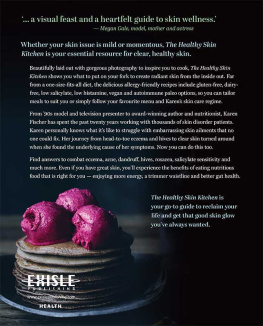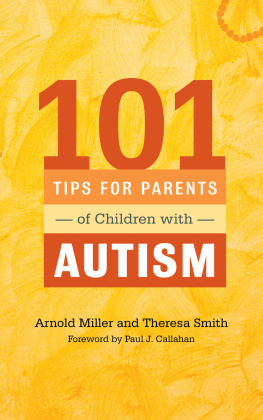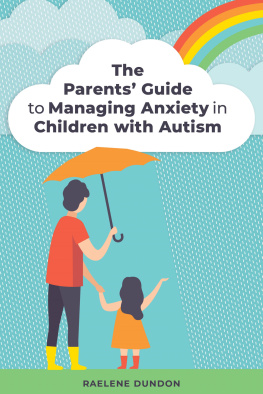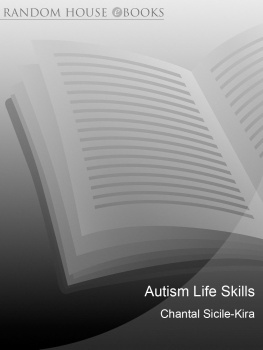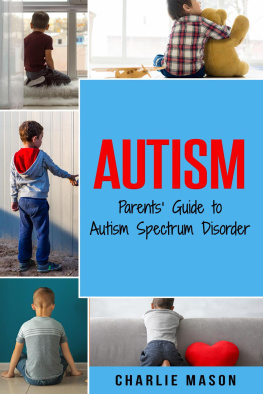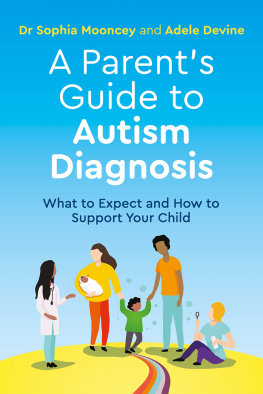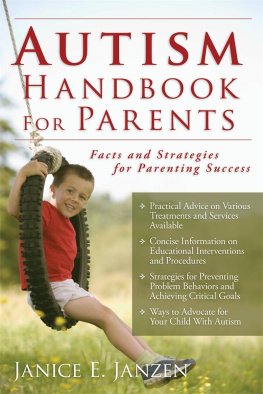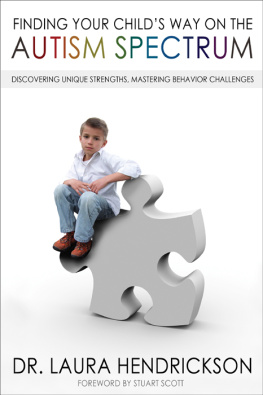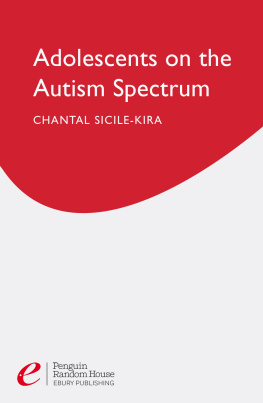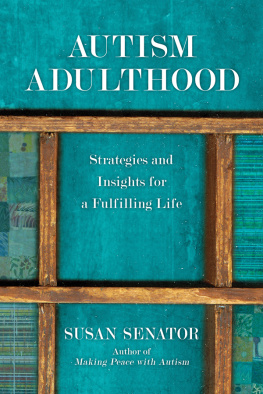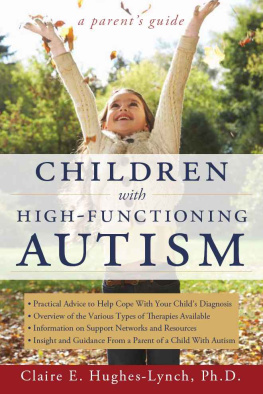UNDERSTANDING
AUTISM
Professor Katrina Williams is a consultant paediatrician, public health physician and clinician scientist. Katrina has worked and studied in Adelaide, Darwin, Sydney and London and is now the APEX Australia Chair of Developmental Medicine, University of Melbourne; Director, Developmental Medicine, Royal Childrens Hospital; and Honorary Research Fellow at Murdoch Childrens Research Institute and is a director of the Australian Advisory Board on Autism Spectrum Disorders. Katrina works as a clinician, service director, educator and researcher specialising in children with neurodevelopmental problems. She has been involved for more than 15 years in initiatives to develop new science, synthesise existing evidence, establish population data and promote evidence into practice and service delivery especially in relation to autism and other developmental disabilities.
Professor Jacqueline Roberts is the current Director of the Autism Centre of Excellence (ACE) at Grifth University. Jacquis background in autism stretches back over 30 years. She has worked in Aspect schools for children with autism as a teacher, speech pathologist, principal and senior manager, and has also worked as a consultant and held several appointments at different universities, teaching autism studies and leading research projects. Jacqui is a director of the Australian Advisory Board on Autism Spectrum Disorders, providing input to the board on a national autism research agenda, and served on the DEEWR Students with Disability in Schools Advisory Council from 20102013. In 2013 Jacqui received the Asia Pacifc Autism Conference (APAC) award for outstanding service to the autism community.
UNDERSTANDING
AUTISM
THE ESSENTIAL GUIDE FOR PARENTS
PROFESSOR KATRINA WILLIAMS &
PROFESSOR JACQUELINE ROBERTS

Understanding Autism is a very timely book by two of Australias most respected researchers. Amongst the barrage of information and misinformation about autism, we now have a reference piece aimed squarely at families negotiating the complexity of life, loving and caring for someone who thinks differently and may therefore need a different style of parenting and support in order to reach their potential and to be happy in life. It seeks to answer the fundamental questions about autism as far as our knowledge at this point in time allows us. It does so using the latest evidence and applying it to real-life situations, and this gives parents and carers facts to base their decisions on rather than hearsay or anecdotal stories.
But one of the main reasons I really like this book is that, as the title implies, it is about understanding autism, not curing or fxing or forcing change, but recognising that everyone has unique strengths and makes a valued contribution to the fabric of life and community. Families are the first and most important carers in life and play a critical role in making this happen. To do this they need the very best information and the latest research, translated into achievable actions. Understanding Autism is a very good place to start this journey.
Judy Brewer
Autism parent and advocate
Although billed as a guide for parents this book would also be of great value to anyone who encounters a child with autism for the first time and needs to begin to understand and best support that child. A decade or so ago, a diagnosis of autism would leave a parent bewildered and isolated not knowing anything about the disorder and often finding few professionals with sufficient understanding to help. In some rural areas, this might occasionally still be the case but now autism receives much more media attention and, of course, there is the internet. Now the problem is not so much a lack of information as a plethora of information, much of which is, in fact, misinformation. This can be overwhelming for parents (and professionals new to autism) who have no idea whom to trust and where to start in helping their child with autism.
This is the great strength of the book. It is informed by research and is authoritative in tone but is written in an easily accessible style. It uses constructed case studies to illustrate the wide range of characteristics that are found within the autism spectrum, so parents are more likely to see how their child fits into the spectrum. It gives a straightforward account of common interventions in autism, including some that have no scientific backing but are frequently adopted by parents. The book is not judgmental, and recognises that interventions may be adopted for a variety of reasons other than their scientific merit. However, by demystifying much of the technical jargon, and helping parents ask the right questions when evaluating information or approaches, this book helps parents regain control over choosing what is best for them and their child. It also helps remove some of the fear and stress that parents often feel in the beginning, by taking an optimistic (yet realistic) view of the likely development and life chances of children on the autism spectrum.
Professor Rita Jordan BSc. MSc. MA. PhD. C.Psychol. AFBPsS. OBE.
Emeritus Professor in Autism Studies
University of Birmingham, UK
CONTENTS
To the parents, children and young
people with autism who have shared
their stories with us.
FOREWORD
Your child or someone else you care for has autism. You might have just found out or you may have known for some time.
In the time we have been working with children, young people and families with autism there has been an explosion of information about autism, including its possible causes and various interventions, and we often hear from families that it is hard to find reliable and relevant information in the one place.
We have written this book to answer the types of questions we are frequently asked. We have created four children and their families and describe their journeys to young adulthood in the hope that this approach brings to life the experiences people with autism have, their many strengths and some of the challenges they face, and also what to expect over time and in different settings.
After addressing some common questions about autism in , we also hope to equip you, as parents and carers, with the tools you need to find and assess information for topics we havent covered, to make best use of new information as it emerges or to form your own opinions about topics we have included.
We hope this book helps you to be the sort of parent or carer you want to be for your child or young person with autism.
A NOTE ON TERMS
The descriptive terms used for autism have changed over the past few decades. For the sake of simplicity, we have used the term autism throughout this book. Other terms you will come across elsewhere include autism spectrum disorder (ASD), autistic disorder or classic autism, autism spectrum condition, high-functioning and low-functioning autism (HFA and LFA), Aspergers disorder, Aspergers syndrome, Aspergers or Aspie. Children with autism may also have been diagnosed with pervasive developmental disordernot otherwise specified (PDDNOS) or atypical autism, while some authors refer to the autisms.
Throughout this book we have used the term child in the early sections and then young person in the secondary (high) school section. We realise that in many instances where we have used the word child that the comment also applies to a young person but we have omitted the later clarification to make the book easier to read.
CHAPTER 1
WHAT IS AUTISM?
So, what is autism? Unfortunately, there is no simple answer to this question. Today, autism is seen as a constellation of behaviours indicating problems in social interaction, coping with change, nuances of verbal and non-verbal communication, and restrictive and repetitive behaviours. There are many different behaviours that indicate difficulties in these areas. Individuals with autism, for example, may not initiate interactions with other people, can become very distressed in situations that involve change, or may have highly focused special interests that they pursue to the exclusion of almost all other activities. Despite the enormous amount of research available into the causes of autism and its biological underpinnings, there is no biological test for autism it remains a behaviourally defined disorder, which means it is diagnosed by watching the behaviours of a child or young person.
Next page

